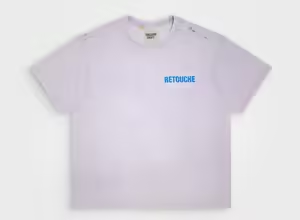Common Questions Answered1 about the Trulife Distribution Lawsuit

Table of Contents
In the fast-paced world of business, legal disputes are inevitable. Companies often find themselves entangled in lawsuits that can significantly impact their operations and reputation. One such case that has garnered considerable attention is the TruLife Distribution lawsuit. This blog post delves into the intricacies of the lawsuit, exploring its background, key issues, legal proceedings, and the potential implications for the parties involved and the industry at large.
Understanding TruLife Distribution trulife distribution lawsuit
TruLife Distribution is a well-known company specializing in the distribution of health and wellness products. With a strong market presence, TruLife has built a reputation for delivering high-quality products and services. The company’s portfolio includes dietary supplements, personal care items, and other wellness-related products, catering to a diverse customer base.
The Background of the Lawsuit
The TruLife Distribution lawsuit originated from a series of allegations and disputes involving contractual obligations, business practices, and regulatory compliance. To understand the complexities of the lawsuit, it’s essential to examine the key events and factors that led to the legal battle.
Allegations and Disputes
The lawsuit against TruLife Distribution primarily revolves around allegations made by former business partners and clients. These allegations include breach trulife distribution lawsuit of contract, misrepresentation, and failure to meet regulatory standards. The plaintiffs claim that TruLife engaged in deceptive business practices, resulting in financial trulife distribution lawsuit losses and reputational damage.
Breach of Contract: One of the central issues in trulife distribution lawsuitthe lawsuit is the alleged breach of contract. The plaintiffs argue that TruLife failed to fulfill its contractual obligations, leading to significant financial harm. These breaches reportedly include delayed product deliveries, substandard product quality, and non-compliance with agreed-upon trulife distribution lawsuit terms.
Misrepresentation: Another critical aspect of the lawsuit involves accusations of misrepresentation. The plaintiffs allege that TruLife made false claims about the efficacy and safety of its products, misleading customers and business partners. These claims have raised concerns about the company’s marketing practices and transparency.
Regulatory Compliance: The lawsuit also highlights issues related to regulatory compliance. It is alleged that TruLife distributed products that did not meet regulatory standards, posing potential health risks to consumers. The plaintiffs contend that the company failed to adhere to industry regulations, compromising product safety and quality.
Legal Proceedings and Developments
Since the filing of the lawsuit, there have been several legal proceedings and developments that have shaped the course of the case. These proceedings provide insight into the legal strategies employed by both parties and the potential outcomes of the lawsuit.
Initial Filings and Responses
The lawsuit was initially filed in a federal court, with the plaintiffs seeking damages and injunctive relief. TruLife Distribution responded by denying the allegations and filing a counterclaim, accusing the plaintiffs of defamation and malicious intent. This initial trulife distribution lawsuit exchange set the stage for a contentious legal battle, with both sides presenting their arguments and evidence.
Discovery Phase

The discovery phase of the lawsuit has been particularly significant, as it involves the exchange of documents, testimonies, and other evidence between the parties. This phase aims to uncover relevant facts and establish the foundation for the case. During trulife distribution lawsuitdiscovery, both sides have gathered extensive documentation, including contracts, emails, marketing materials, and regulatory filings, to support their claims.
Pre-Trial Motions
As the case progressed, both parties filed several pre-trial motions, seeking to resolve specific legal issues before the trial. These motions have included requests for summary judgment, dismissal of certain claims, and exclusion of evidence. The court’s rulings on these motions have influenced the scope and direction of the lawsuit, determining which issues will be addressed at trial.
Settlement Discussions
Throughout the legal proceedings, there have been periodic discussions about a potential settlement. Settlement negotiations aim to resolve the dispute without a full trial, potentially saving time and resources for both parties. However, as of now, no settlement has been reached, and the case continues to move forward in the court system.
Implications for TruLife Distribution
The outcome of the TruLife Distribution lawsuit carries significant implications for the company. These implications extend beyond the immediate legal consequences and could impact TruLife’s operations, reputation, and future prospects.
Financial Impact
One of the most immediate concerns for TruLife is the potential financial impact of the lawsuit. If the court rules in favor of the plaintiffs, TruLife could be liable for substantial damages, including compensation for financial losses and punitive damages. These financial penalties could strain the company’s resources and affect its ability to operate effectively.
Reputational Damage
The lawsuit has already had a noticeable impact on TruLife’s reputation. Allegations of breach of contract, misrepresentation, and regulatory non-compliance have raised questions about the company’s business practices and integrity. Even if TruLife successfully defends itself against these claims, the negative publicity surrounding the lawsuit could have long-lasting effects on its brand image and customer trust.
Operational Changes
In response to the lawsuit, TruLife may need to implement significant operational changes to address the underlying issues and prevent future disputes. This could involve revising contracts, enhancing product quality control measures, improving regulatory compliance, and adopting more transparent marketing practices. These changes, while necessary, could require substantial investment and restructuring.
Broader Industry Implications
Beyond its impact on TruLife Distribution, the lawsuit has broader implications for the health and wellness industry as a whole. The case highlights several critical issues that other companies in the sector must consider to avoid similar legal challenges.
Emphasis on Regulatory Compliance
The allegations of regulatory non-compliance against TruLife underscore the importance of adhering to industry standards and regulations. Companies in the health and wellness sector must ensure that their products meet all regulatory requirements to protect consumer safety and avoid legal repercussions. This includes rigorous testing, accurate labeling, and transparent marketing practices.
Transparency and Ethical Practices
The lawsuit also emphasizes the need for transparency and ethical practices in business operations. Companies must provide accurate information about their products and services, avoiding any misleading claims or misrepresentations. Building and maintaining trust with customers and business partners is essential for long-term success in the industry.
Contractual Integrity
Breach of contract claims in the lawsuit highlight the importance of contractual integrity. Companies must honor their contractual obligations and maintain clear communication with their partners and clients. Establishing robust contract management processes and regularly reviewing contractual terms can help prevent disputes and ensure smooth business relationships.
Conclusion
The TruLife Distribution lawsuit serves as a cautionary tale for companies in the health and wellness industry. The allegations of breach of contract, misrepresentation, and regulatory non-compliance have far-reaching implications for TruLife and the broader market. As the legal proceedings continue, the outcome of the case will provide valuable lessons for businesses seeking to navigate the complexities of the industry and maintain ethical and compliant practices.
For TruLife Distribution, the road ahead involves addressing the legal challenges, implementing necessary changes, and rebuilding its reputation. By learning from this experience and prioritizing transparency, compliance, and integrity, TruLife can emerge stronger and more resilient.
As the lawsuit unfolds, it will be crucial for industry stakeholders to stay informed and proactive in addressing similar issues within their organizations. The TruLife Distribution lawsuit is a reminder that in the world of business, maintaining trust and adhering to ethical standards are paramount to achieving sustainable success.




